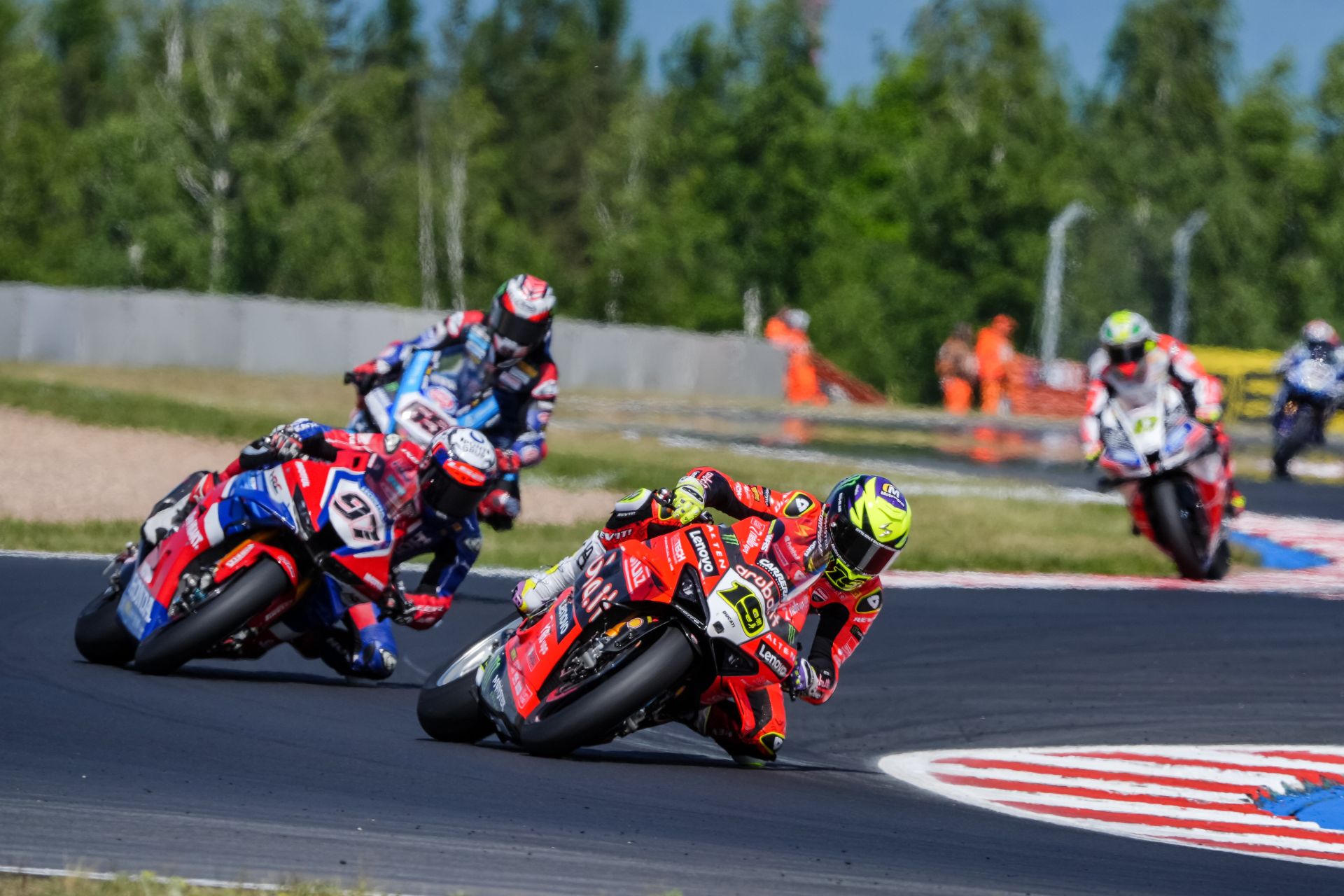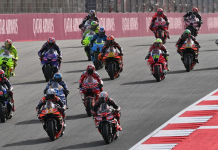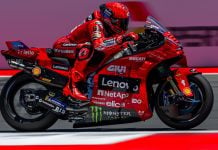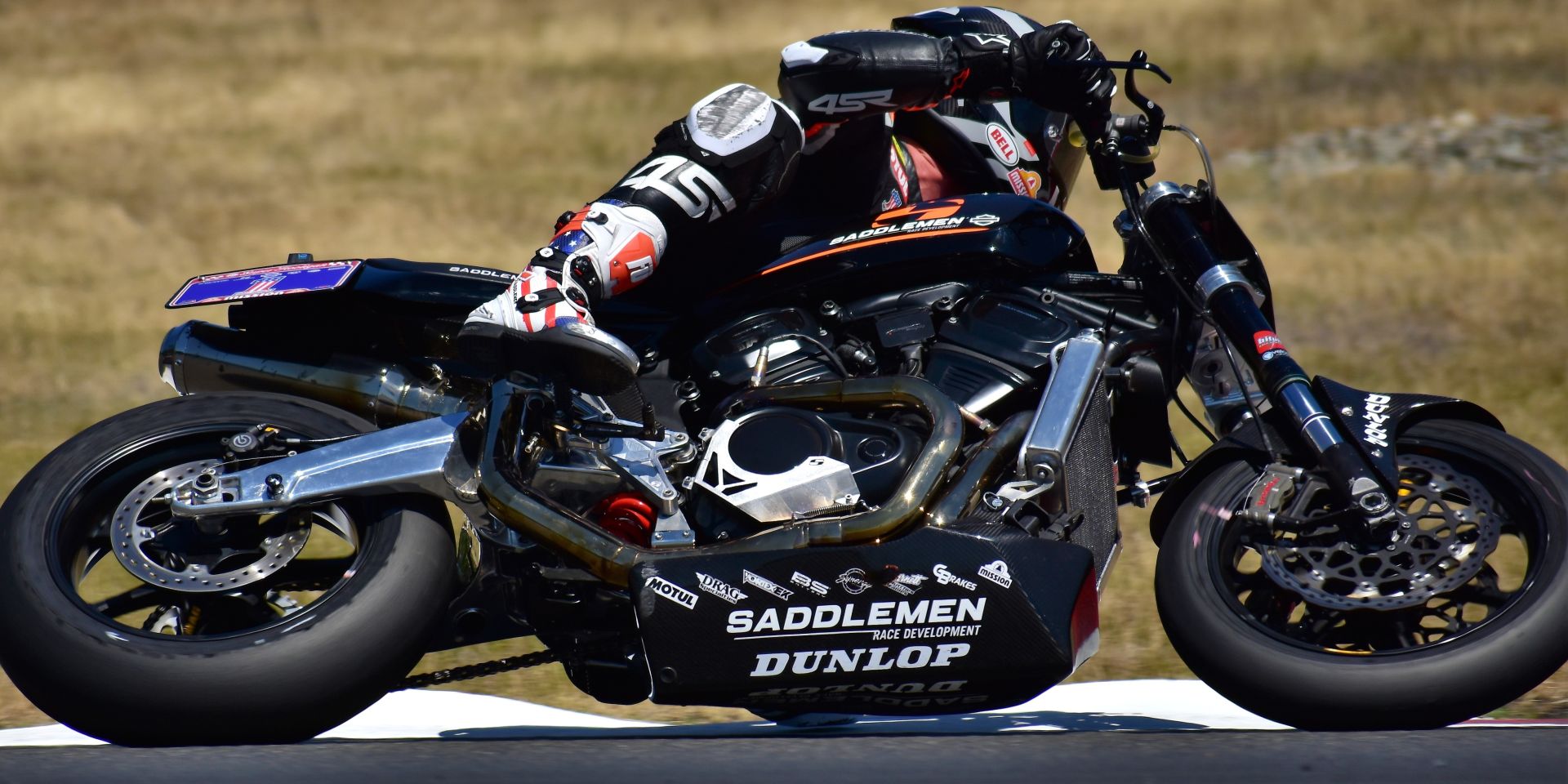First Person/Opinion
By Michael Gougis

What do the teams racing Harley-Davidson Pan America ST racebikes in MotoAmerica’s Super Hooligan class have in common with two-time Superbike World Champion Alvaro Bautista?
In both cases, someone thinks that they’re racing under their weight category, and as such, each is carrying around an unnecessary lump of heavy metal on their racebikes.
The Harley-Davidson teams showed up at The Ridge Motorsports Park facing new MotoAmerica Hooligan minimum weight requirements that were, in my memory, some of the biggest weight penalties ever imposed in motorcycle road racing. Meanwhile, Bautista took to social media this week to challenge the Superbike regulations that have, in effect, threatened to end his career.
Imposing success penalties (let’s call them what they are) by adding weight to racebikes is a time-honored method of trying to balance the performance of different types of machines racing in the same class. (No one was complaining about Bautista’s weight when the Ducati riders were beating him in his lost years on the Honda Superbike. No one was adding weight to the Pan Americas when they were getting beaten.) In World Superbike, there are different types of Inline-4 racebikes and a V-4; in Hooligan, there are air-cooled bikes and water-cooled Triples and Twins of a variety of displacements.
But there are ways to balance performance that don’t penalize individual riders or discount the efforts of an inventive, creative, hard-working race team. And in each case, let’s just say that the way the weight penalties have been applied could have been done more skillfully.
Tired of Kawasaki’s domination, World Superbike started imposing success-penalty rev-limits, which have since been replaced by fuel flow restrictions. Ducati and BMW both have seen their fuel consumption reduced this season. And, presumably tired of Bautista’s domination of the series, World Superbike now has a “soft” minimum combined rider/machine weight limit. If the bike is at the class weight minimum of 168 kg (370.3 lbs.), then for every kilogram (2.2 pounds) a rider is under the “reference weight” of 80 kg (176.37 lbs), half a kilogram must be added. According to media reports from Europe, Bautista is racing with at least six kilograms (13.2 pounds) bolted to his Aruba.it-Racing factory Panigale V4 R. It may be more than that.
Bautista went from 27 wins before the regulation in 2023 to four wins in 2024. Even taking into account the concessions that allowed BMW to build a special chassis and their hiring the immensely talented Toprak Razgatlioglu, it’s hard to believe that the weight penalty had nothing to do with Bautista’s dramatic drop in results. No one forgets overnight how to race a motorcycle.
With the same thing happening in 2025, Ducati fired Bautista and he is without a ride for 2026. And if you read between the lines, no one wants to hire him, at least partly because whoever does put him on their Superbike in 2026 will be bolting a big chunk of ballast onto the machine as well – regardless of how well their bike is performing. The slowest privateer team could hire Bautista and the team would still have to bolt chunks of metal to their bike, or race a machine that’s far heavier than the class machine weight limit.
It’s a pretty good guess that the “Thanks, but no thanks” responses Bautista’s agent is likely getting from other manufacturers prompted the rider to take to social media with a plea to re-think the rule that is killing his career.
“The truth is, when your physical dimensions become a structural disadvantage—something that says nothing about your ability as a rider—then it stops being a technical issue and becomes a form of discrimination,” Bautista wrote. “I understand that weight is a technical factor in motorcycle performance. I accept that. But when the system fails to take into account natural differences in body types, it ceases to be fair and begins to exclude.
“That is why I’m writing today. Not to portray myself as a victim. Not to create division. I’m writing because I don’t want other riders—now or in the future—to go through what I have gone through in the last couple of years. I don’t want them to feel that their body is an obstacle more difficult than any corner on the track.
“My aim with this message is to start a necessary conversation. To ask that we rethink technical criteria, regulations, and above all, the culture of motorcycling. Riders are not defined by the number on a scale. They are defined by their intelligence on track, their instinct, their courage, and their connection with the bike.”
World Superbike simply went too far in one go with the weight penalties. It would have been far better to introduce them gradually to see what the impact would be. It’s clear that in their attempt to rein in the Panigale V4 R, an incredible racebike, the rule had a disproportionate impact on one rider.
But if 13.2 pounds seems like a lot, ponder the 38-pound boat anchor that the Saddlemen squad had to bolt to their Pan America to race at The Ridge. That’s more than the weight of two regulation bowling balls. The team made sort of a small steel coffin and filled it with molten lead to bring the bike up to the new minimum weight. James Rispoli, who rides a Pan America for the KWR Racing team, said his bike had an additional 25 pounds bolted to it. “Changes? We’re in the stratosphere compared to where we were at (Road) Atlanta,” Rispoli said. “Springs, geometry, valving. The biggest impact is in the turning, the way the bike naturally turns, but it’s in acceleration, braking, everywhere.”
For the Hooligan class, the minimum weight for water-cooled machines 1000cc and below is 365 lbs, 377 lbs. for water-cooled machines over 1000cc and 350 lbs. for all air-cooled twin-cylinder bikes regardless of displacement. (The class only allows electric bikes, and gas-powered Twins and Triples.) Unless you’re riding a Pan America, which had locked out all the podium positions this year prior to The Ridge. That bike, which admittedly no one was racing at the class minimum weight, now must weigh 450 lbs. On paper, that’s a 73 pound change, or approximately the weight of a baby calf or a two-person couch!
David Echert’s Saddlemen team couldn’t get close to the Super Hooligan win at The Ridge two years ago. At their best, Cory West was second in Race Two, but more than six seconds back after seven laps. So Echert and others racing the porky adventure bike put it on a diet. For Saddlemen, that meant a carbon-fiber subframe, exhausts that were made of half-thickness materials, smaller radiator, even the powder coating was stripped from components to reduce their weight. The team got the bike down to about 412 pounds – nowhere near the class minimum weight, but an impressive 130 pounds lighter than the stocker. It was expensive, but it was effective – West won the class Championship last year.
Much of that hard work has been nullified.
“No,” Echert said, when asked if the penalty seemed fair. “It would have been better if they had told us they would do this before we spent all that money to make the bikes lighter.”
Once again, better to have eased into this penalty. Increase the weight incrementally, or over a period of time. Penalizing a team for doing well doesn’t feel right. I am a fan of the sort of unofficial rule in Formula One car racing: A team that develops a technical breakthrough gets to keep it for the rest of the year, and then it’s outlawed. At least that way the team gets to benefit from its hard work and ingenuity. In my opinion, the weight changes should have been delayed until next year. That way, everyone knows what’s coming and can plan, design and build accordingly.
Racing should reward the people who put in the work to run at the front and not penalize them, regardless of results. Take away those hard-earned advantages only after careful and significant thought and reflection. That is all that I’m saying here.







